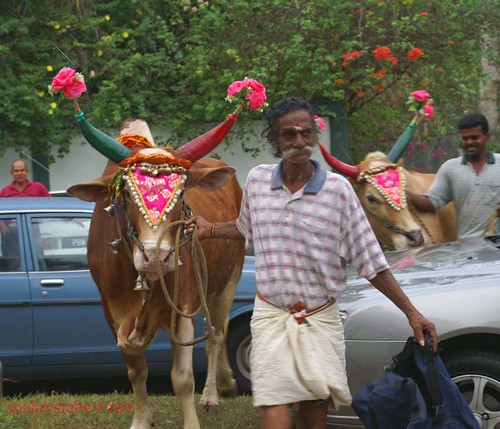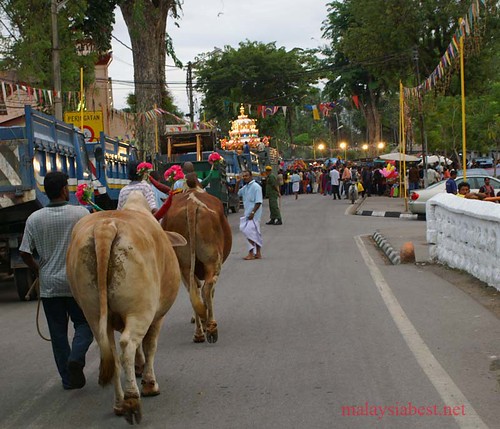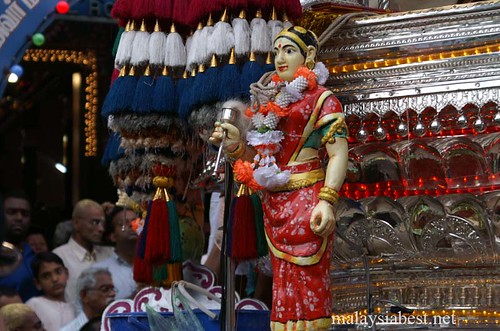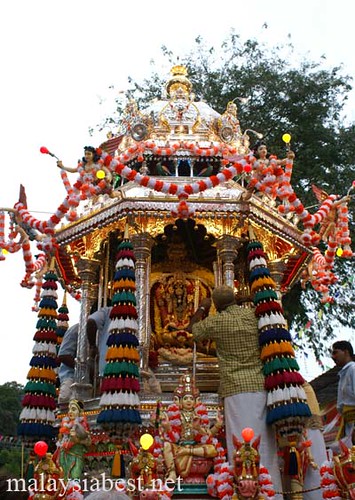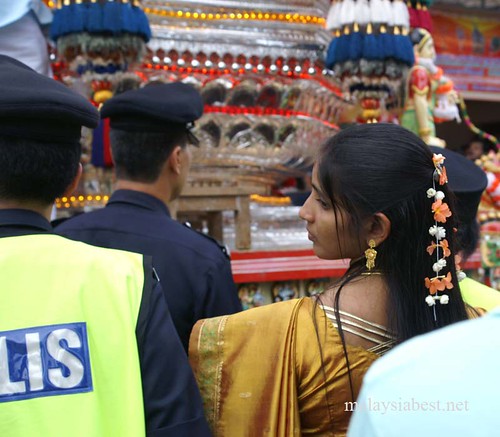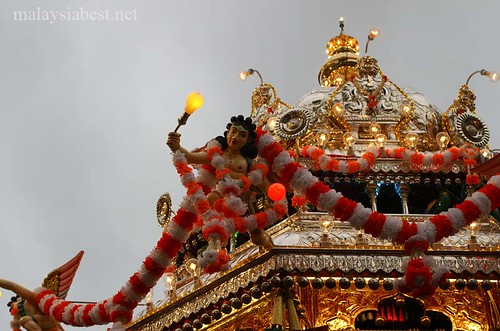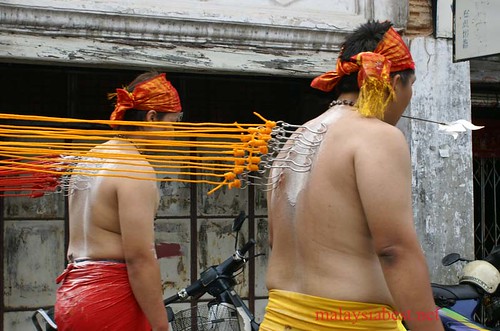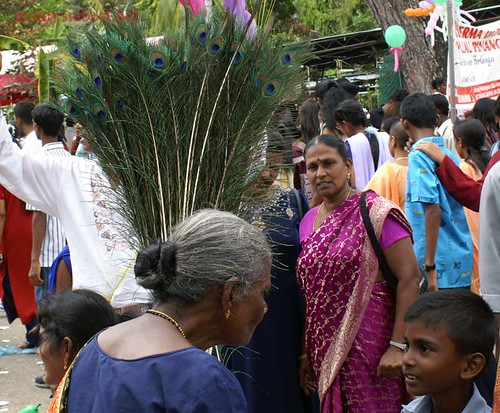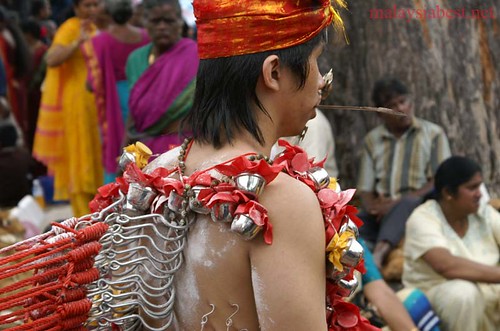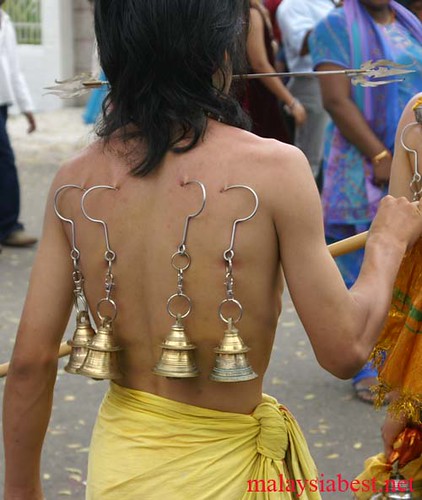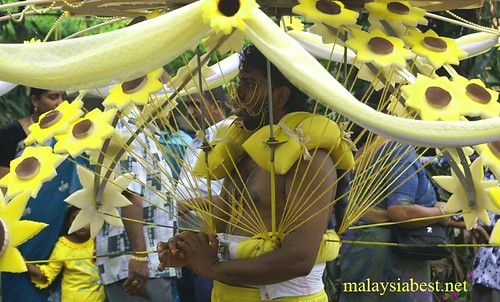These two cows are prepared to pull the silver chariot with the image of Lord Murugan back from the Waterfall Gardens temple to the temple in Pitt Street.
I was at the Penang Youth Park to fetch my children from their skateboarding actitivities when I was caught in the middle of this ceremony.
Lord Murugan’s silver chariot in the distance.
I got very close to the chariot and witnessed the Lord Murugan’s image being put on the chariot. Devotees were packed there, waiting with their offerings.
The chariot about to leave the temple around 7.30 pm. Earlier, on our way to the Youth Park, we saw many people lining up along the way with sackloads of coconuts. Many of these groups are Chinese families and shopowners. These people will break the coconuts before the arrival of the silver chariot. I quipped to my husband that when most Chinese are supposed to throw oranges into the seas on Chap Goh Meh, these Chinese are throwing coconuts. A blend of different religious faiths?
The police team at full force at the temple vicinity and also along the way to manage traffic. An Indian girl waiting for her turn to make offerings to Lord Murugan before the silver chariot departs.
The sky turning dark and the chariot shining beautifully. Another glimpse, until the next year Thaipusam….
